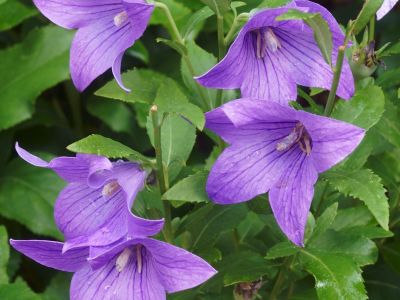The opened flowers resemble those of bellflowers, their kissing cousin. While most often deep blue or purple, white and pink varieties are also available. Depending where you are, the balloon flower may also be known as Chinese or Japanese bellflower.
Growing Balloon Flowers
The balloon plant is easy to grow and hardy in USDA Zones 3 through 8. It will thrive in sun or partial shade. It likes well-drained, slightly acidic soil; and although the balloon flower plant will tolerate dry conditions, it prefers (and needs) plenty of moisture. This cold hardy plant also prefers cooler conditions in summer, so afternoon shade is a good idea for warmer regions. Seeds can be directly sown in the garden or started indoors in early spring. It is not necessary to cover seeds; simply moisten the area and within a couple weeks you should have sprouts. Thin these to about a foot (31 cm.) apart. Generally, balloon flowers bloom within the same season they are sown.
Caring for a Balloon Plant
Not only are they easy to grow, but these plants are easy to care for as well. If desired, they can be fertilized with a slow-release fertilizer in spring. From there, you simply water as needed. With exception to occasional bouts of slugs or snails, balloon flower pests are few. Basically, all you’ll need to do for these plants is sit back and enjoy these long-blooming plants throughout summer. Of course, they may require staking if falling over. You can also add them to cut flower arrangements. Since the succulent stems have milky sap, you’ll need to lightly singe the cut ends with a candle (or match) immediately after cutting to make them last longer. In fall you can add an ample layer of mulch for winter protection. Balloon flower plants don’t really like being disturbed and although division can be done, it’s often difficult. Therefore, propagation by seed is better or cuttings can be taken in spring, if desired.
